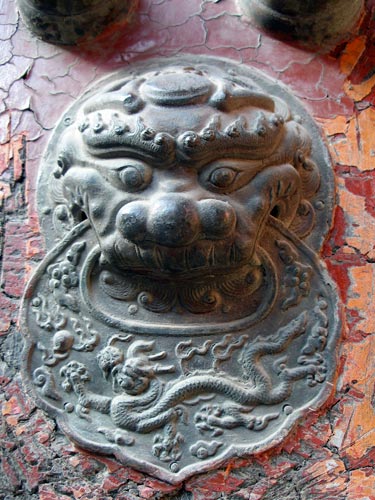
A lion guards the door on the Gate of Terrestrial Tranquility (KunNingMen) leading into the gardens.
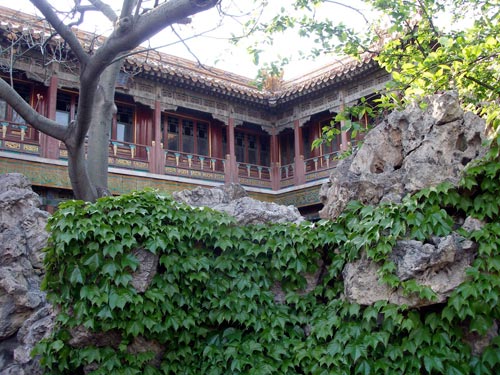
Yujing (Imperial View) Pavilion rests atop Duixiu (Collecting Elegance) Hill.

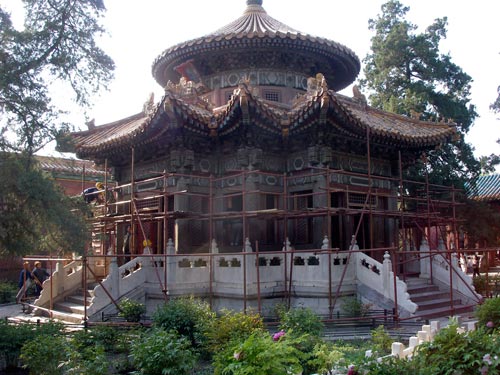
In each of the four corners of the garden there is a pavilion, symbolizing the four seasons. This is Qianqiuting (the Pavilion of One Thousand Autumns).
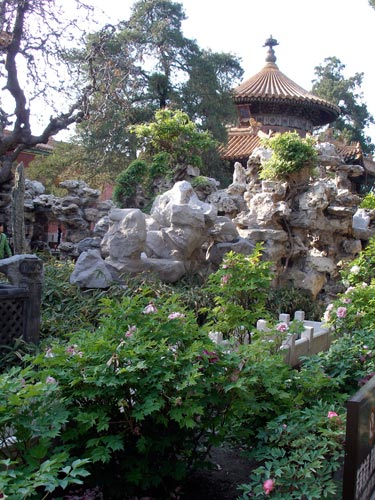
The garden was constructed using a type of limestone rock known as Taihu Rock that is found at the bottom of Taihu Lake in the Yangtze River Delta.
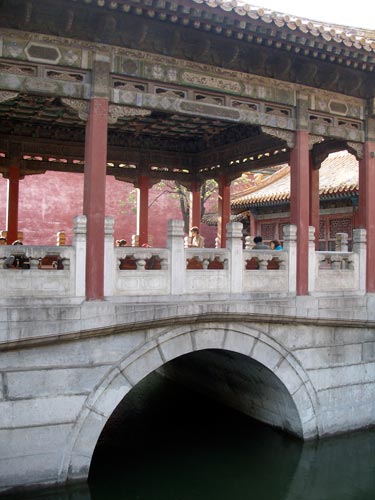
Chengruiting (the Pavilion of Auspicious Clarity) is a square pavillion over a pond. The pond is filled with fish, which are symbolic of surplus. In the old days, people always worried about where their next meal was coming from.
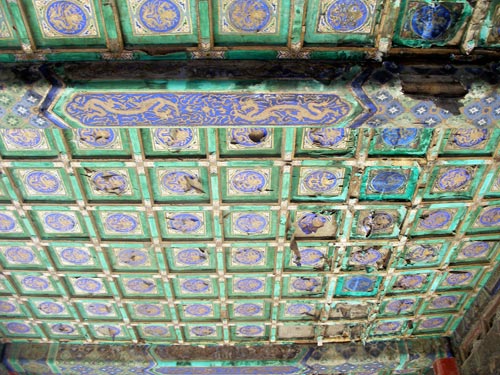
The ceiling
Pavillion to Usher in Light:
During the Qing Dynasty, Yan Hui Ge (Pavillion to Usher in Light) was the place where the emperor's concubines were selected.
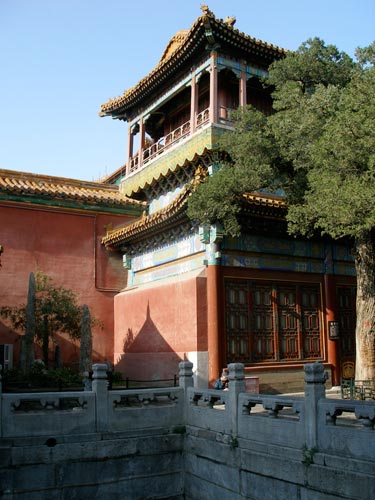

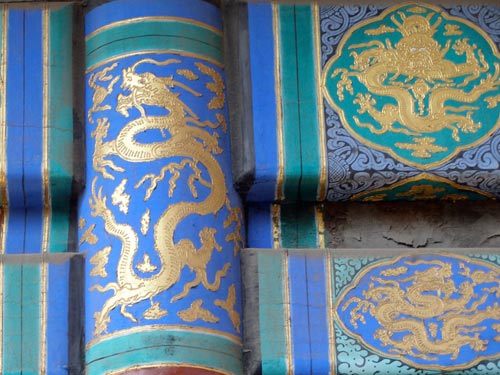
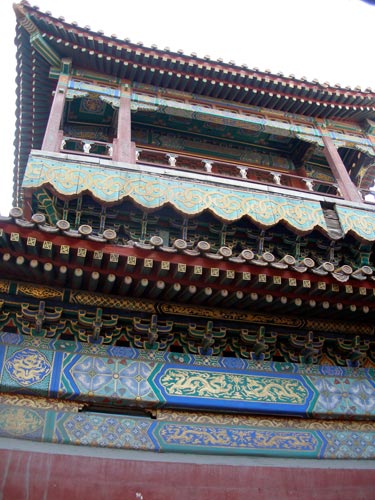
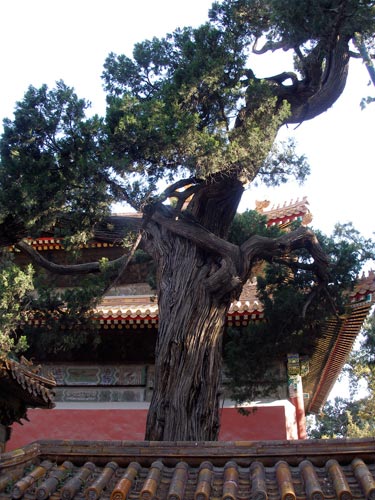
Imposing old cypress trees fill the garden.
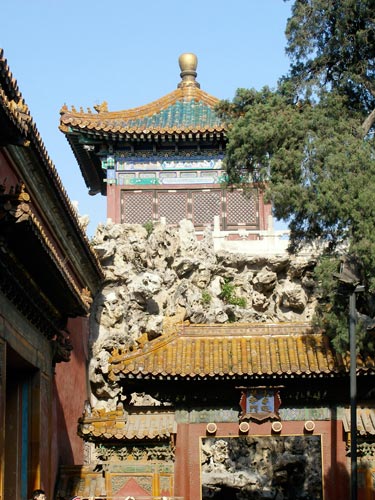
Gate of Divine Prowess (Shenwumen):
This is the north gate of the Forbidden City. From the tower, bells were struck each morning and drums were beaten each evening to mark time. The empress and imperial concubines left the palace through this gate to attend the ceremony of the new silkworm-breeding season.
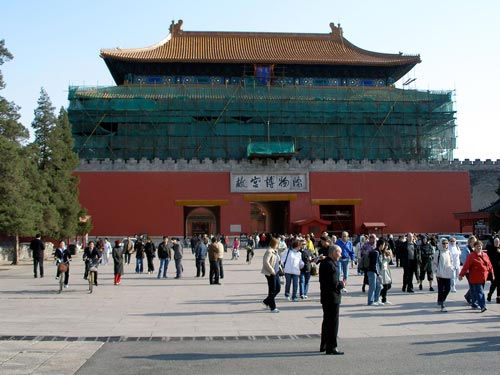
City moat:
The Forbidden City is surrounded by a moat which is 20 feet deep and 170 feet wide.
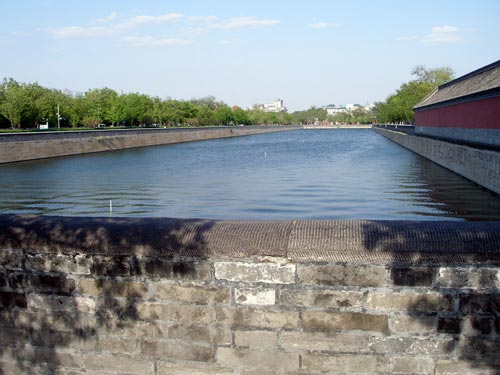
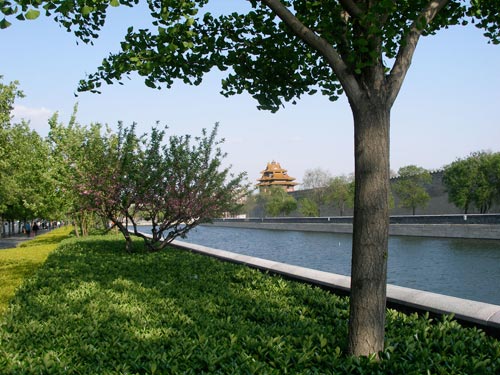
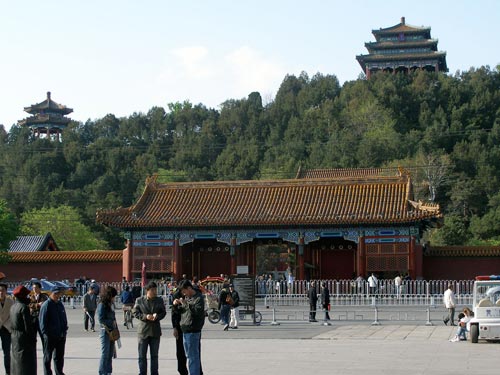
Jingshan (also Feng Shui Hill, Coal Hill or Prospect Hill) lies immediately north of the Forbidden City. The artificial hill was constructed in the Yongle era of the Ming Dynasty entirely from the soil excavated from the moat and nearby canals. All of this material was moved only by manual labor and animal power. On the top of each of the five peak sits an elaborate pavilion. Originally an imperial garden, the area is now a public park.

